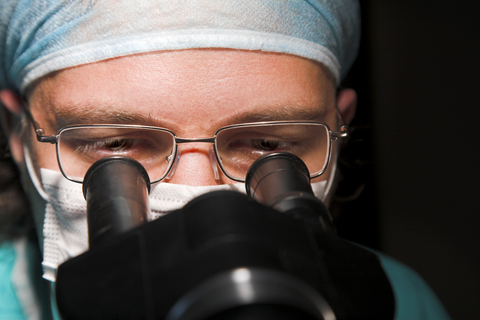Exploring the economics of sight saving technology

Researchers at Bangor University have been exploring the economics of sight saving technology.
Over two million people in the UK are living with sight loss. This will double to nearly four million people by 2050 as the population ages and underlying causes like obesity and diabetes increase. This places huge pressure on NHS eye care services. The 2016 Royal National Institute for the Blind (RNIB) report highlighted that sight loss is estimated to cost over £28bn to the UK economy. Research into new sight saving technology could improve the lives of people at risk of sight loss and provide savings to the NHS and wider economy.
The Centre for Health Economics and Medicines Evaluation (CHEME), part of the Bangor Institute for Health and Medical Research (BIHMR) in the School of Healthcare Sciences at Bangor University is active in a wide range of health economics research including sight loss studies. CHEME has a track record in publishing economic studies on intervention to prevent and manage sight loss, working recently with Moorfields Eye hospital on the CLARITY study published in the Lancet.
Bangor University reports two researchers from CHEME, Seow Tien Yeo and Professor Rhiannon Tudor Edwards, are co-investigators on the optical coherence tomography (OCT) study, which has been awarded £1.3m in funding from the National Institute for Health Research (NIHR) Invention for Innovation (i4i) Programme. This study aims to develop and explore the clinical development of an Ultra-Sensitive OCT (US-OCT) device to improve the management of eye disease.
Rhiannon Tudor Edwards said “As someone with personal experience of sight loss, I am always pleased to bring our expertise in health economics and economic evaluation to this issue. Preserving sight and preventing sight loss across the life-course can bring enormous benefits to individual’s lives, to the NHS and the wider economy.”
Seow Tien Yeo said “We will assess the value of US-OCT, compared to standard OCT, in the management of eye disease. The cost of eye scan per visit and the quality of eye images generated by the US-OCT and standard OCT will be explored.”
OCT is an indispensable imaging tool for the diagnosis and management of retinal diseases and glaucoma, whereas US-OCT is intended to revolutionise the way corneal eye conditions are detected, diagnosed and managed.
This means that doctors using the US OCT will be presented with a non-invasive, safe, cross-sectional view of a cornea, a virtual biopsy, while patients will benefit from earlier disease detection, more accurate monitoring of their eyes and personalised management of their conditions.
Dr Yalin Zheng, the Principal Investigator of the study from the University of Liverpool’s Department of Eye & Vision Science, said “OCTs have already transformed the way we diagnose and treat eye conditions, but our aim is to develop a system which will take that to the next level. By adopting a different approach to other systems on the market we are developing an OCT scanner which offers superior scanning technology and wide applicability, while also being commercially viable.”








